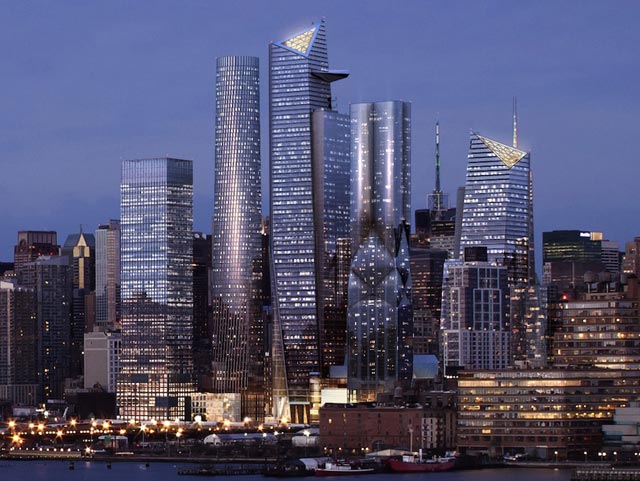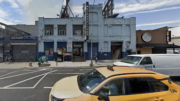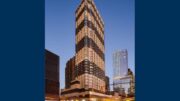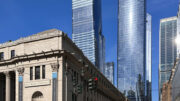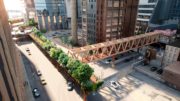Earlier this month, news broke that may force Mayor Bill de Blasio to deal with the second commercial real estate challenge left over from the Bloomberg years: Hudson Yards.
The first challenge – SL Green’s request to build an office tower called One Vanderbilt next to Grand Central, and the broader Midtown East rezoning proposed during the waning years of the Bloomberg administration – has been somewhat of an easy choice. Midtown East is the city’s premier office district, and commercial development there can yield windfall sums for the city. The only challenge is dividing the spoils.
But Hudson Yards is another story. The project to pepper the Far West Side with new office towers has stalled, years after the city’s real estate market has emerged from the downturn. JP Morgan Chase offered to jumpstart the megaproject, which only has a single tower rising, by building a nearly 4 million-square foot headquarters on the block bounded by 10th and 11th Avenues and 33rd and 34th Streets.
The cost, though, would have been enormous. The bank opened negotiations by asking for $1 billion worth of tax breaks for the $6.5 billion project, according to the New York Times, on top of the normal tax breaks that are already baked into the Hudson Yards rezoning area. De Blasio and Governor Andrew Cuomo wouldn’t accede to that, and the bank has now withdrawn its proposal, and will stay in Midtown East.
The administration was asked to choose between handing out more tax breaks for office developers, or letting the land continue to languish. But there may be another way: rezone more of Hudson Yards to allow for residential development.
Unlike most tax breaks-for-development deals, JP Morgan Chase wasn’t even offering to grow its job base. The bank was only pledging to have 16,000 employees at the new two-tower complex, leaving room to trim up to 4,000 from its New York City workforce.
But Hudson Yards is in dire straits. Only one tower – 10 Hudson Yards, developed by Related with Coach as an anchor tenant – is a sure thing so far. And according to CompStak data reviewed by YIMBY, only one tenant – SAP, with 115,000 square feet of space – is paying a face rent that allows for much profit (they’ve agreed to pay $83 per square foot annually for the first five years of their 15-year lease rising to $97 for the last five, according to CompStak data obtained by YIMBY, with 13 free months). It’s been over a year since the last leases were inked at the tower, which is now rising.
Brookfield’s Manhattan West got a big boost when Skadden Arps announced that they’ve signed a letter of intent to take around half a million square feet of space, but they’re likely paying the same low anchor tenant prices as Coach and L’Oréal were offered to anchor Related’s tower. The deal still leaves millions of square feet unclaimed in Brookfield’s two office towers, on top of what Related still needs to lease in its two towers.
The fundamental problem that de Blasio has inherited is that more office space at Hudson Yards does not appear viable given the tax abatements that have been approved.
The plan was for the first 5 million square feet of new commercial space in Hudson Yards west of 10th Avenue to have a 40 percent, 15-year tax abatement (plus a four-year phase-out), dropping down to a 25 percent break, and then 20 percent, and finally 15 percent for each consecutive 5 million square foot chunk. Related has eaten up the majority of the 40 percent breaks with its two Hudson Yards towers, with Tishman Speyer likely to take the remainder.
But whether anyone will be willing to build office space west of 10th Avenue for a mere 25 percent tax break remains to be seen. JPMorgan Chase apparently isn’t, and with lots of unclaimed space under construction (or soon to be) at the World Trade Center and Related’s Hudson Yards towers, among other places, it’s not immediately obvious that there will be enough demand to justify further office building in the area before the end of this market cycle.
And without more development, the city will have to continue to shell out large sums of money each year to pay off the bonds that were sold to build the 7 train extension and related infrastructure. In 2015, the cost to the city could be nearly $100 million, according to data compiled by the New York City Independent Budget Office, on top of the $334 million already paid by the city through 2014.
There is, however, one possible way out of this conundrum: rezone Hudson Yards to allow for more residential development. Right now, the land along Hudson Boulevard, between 10th and 11th Avenues in the West 30s, is mostly zoned for commercial use, as is the corridor south of 34th Street from Penn Station to the river.
Housing is much more valuable than office space, and builders could easily get $2,000 per square foot for high-rise condos on the Far West Side, within walking distance of Midtown. Compare this with the struggle to lease office space in the $80s a foot, and the switch would be a no-brainer for any towers not already rising.
The de Blasio administration’s affordable housing ambitions would complicate any rezoning, as the administration and City Council would surely insist on some percentage of affordable units. In the past, below-market units were always incentivized with tax breaks, which would at Hudson Yards mean no money to pay off the Hudson Yards Infrastructure Corporation bonds.
But the administration has also said that it wants to start requiring affordability without tax breaks, and Hudson Yards would be the perfect place to test whether it’s possible. The Hudson Yards land zoned for office space traded as prices much lower than it would have had it been zoned for housing, and rezoning for more residential space – which might require the state to ease its hard cap on residential densities – would allow the city to channel some of this increase in land value towards below-market housing.
Newly-allowed residential towers at Hudson Yards would likely not support as high affordable housing ratios – 30, 40 or 50 percent – as many politicians would want, while still paying down the subway bonds. But it could be a way for the administration to spur development on the Far West Side while still bringing in some affordable housing development, without straining the city budget.
A forest of class A office skyscrapers at Hudson Yards may have been the dream of Dan Doctoroff and Michael Bloomberg, but as the recovery gathers speed and the neighborhood is still largely surface parking lots, it may be time for the de Blasio administration to reassess whether the dream can be realized.
Talk about this project on the YIMBY Forums
For any questions, comments, or feedback, email [email protected]
Subscribe to YIMBY’s daily e-mail
Follow YIMBYgram for real-time photo updates
Like YIMBY on Facebook
Follow YIMBY’s Twitter for the latest in YIMBYnews

